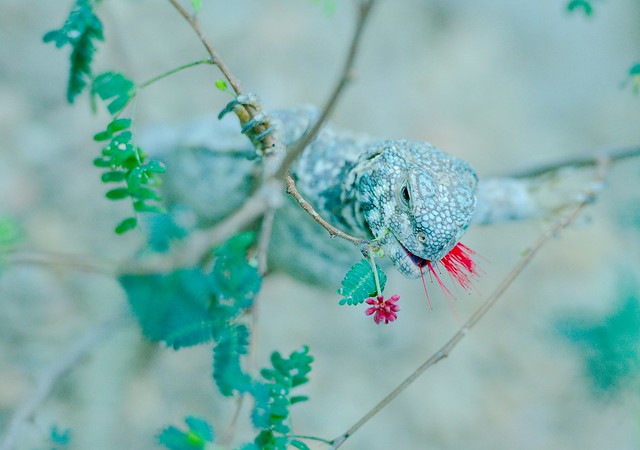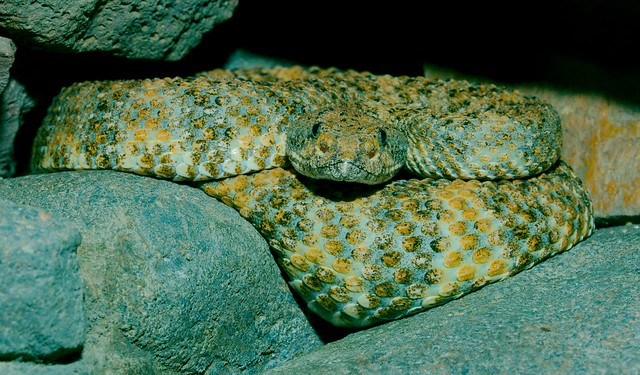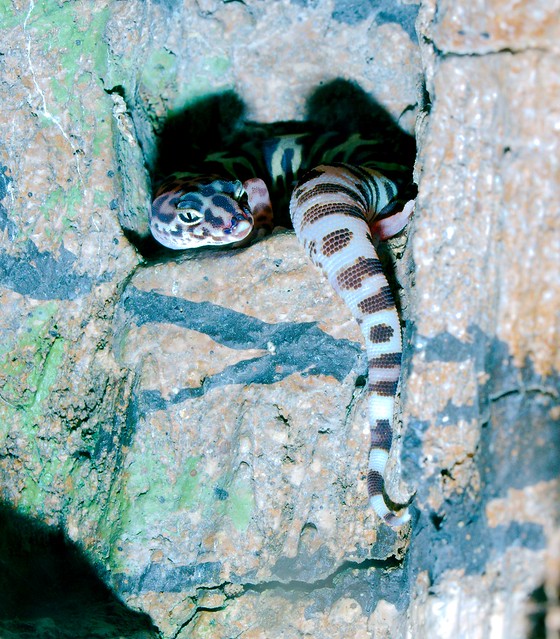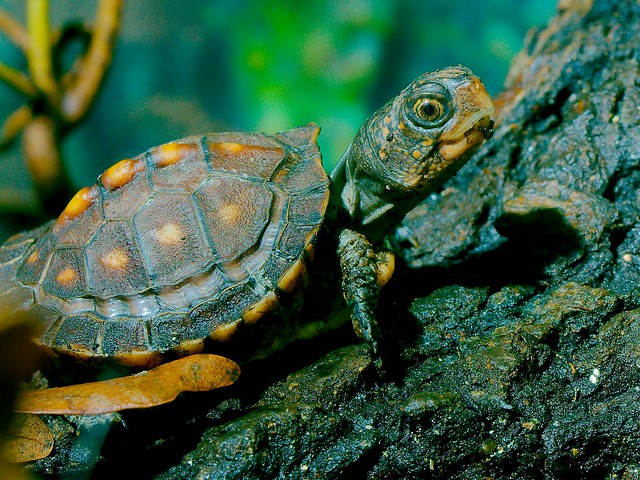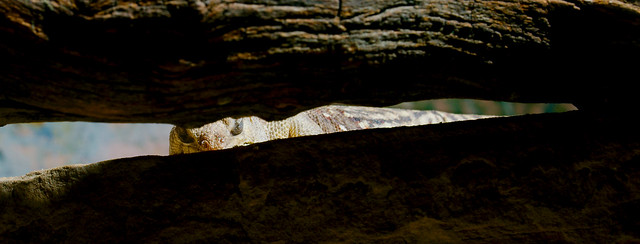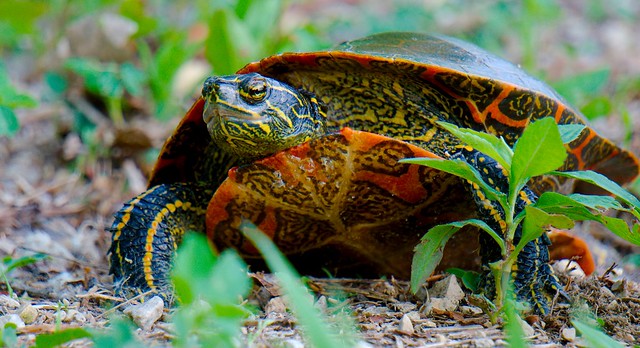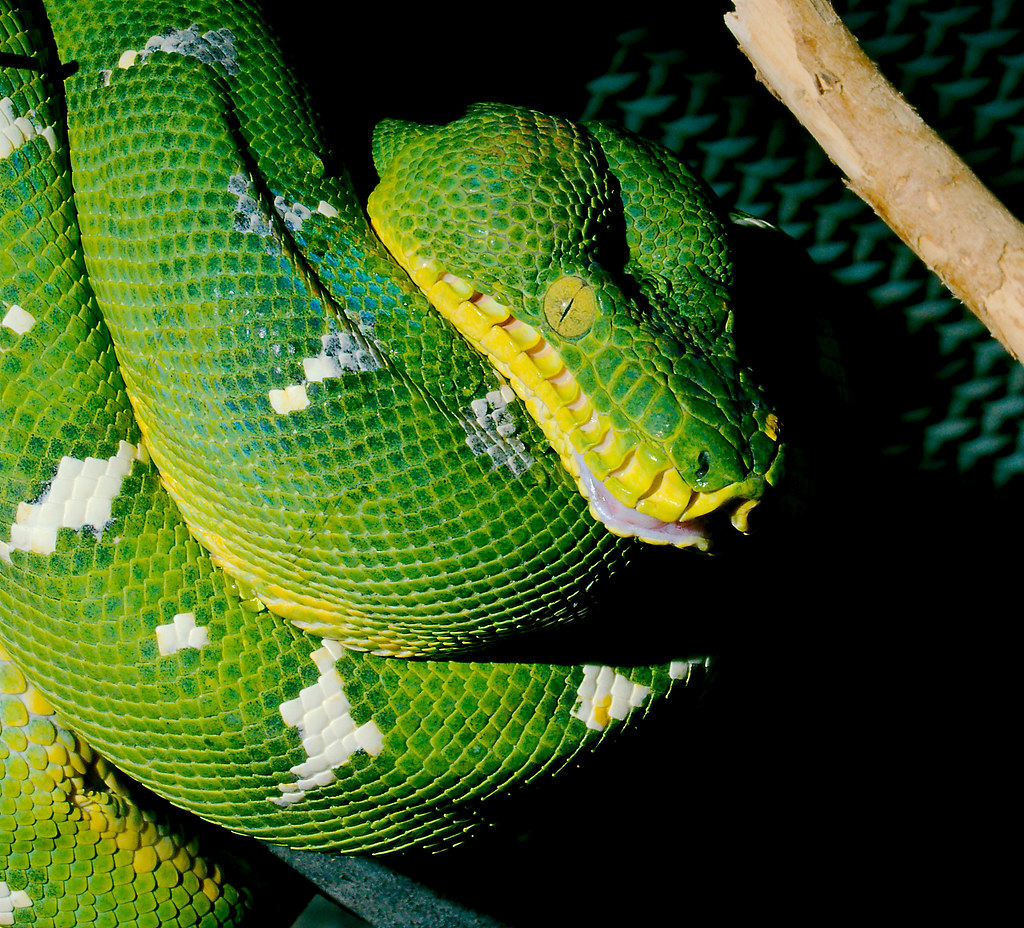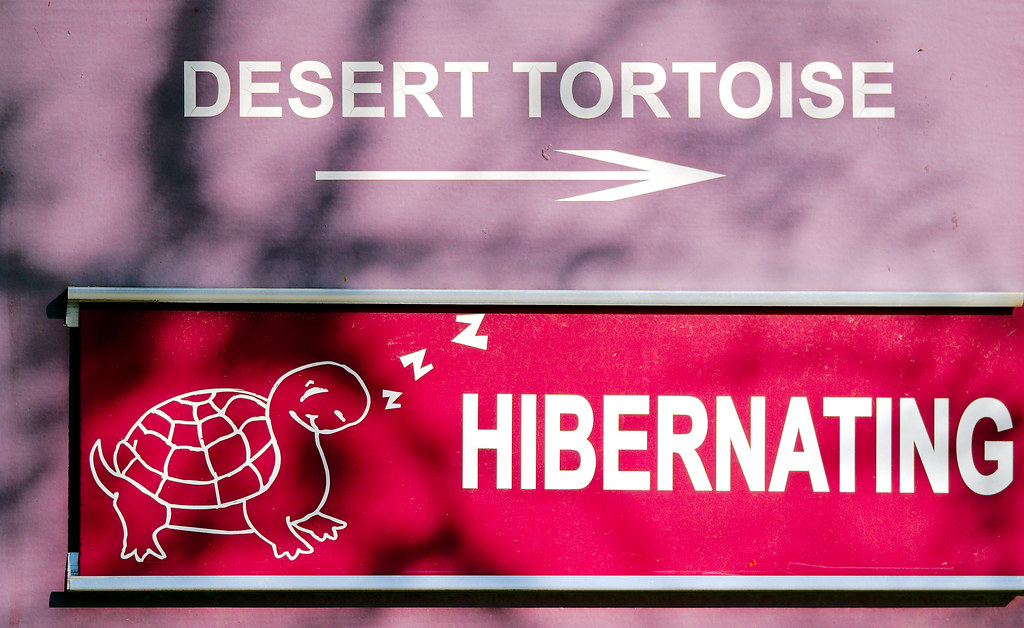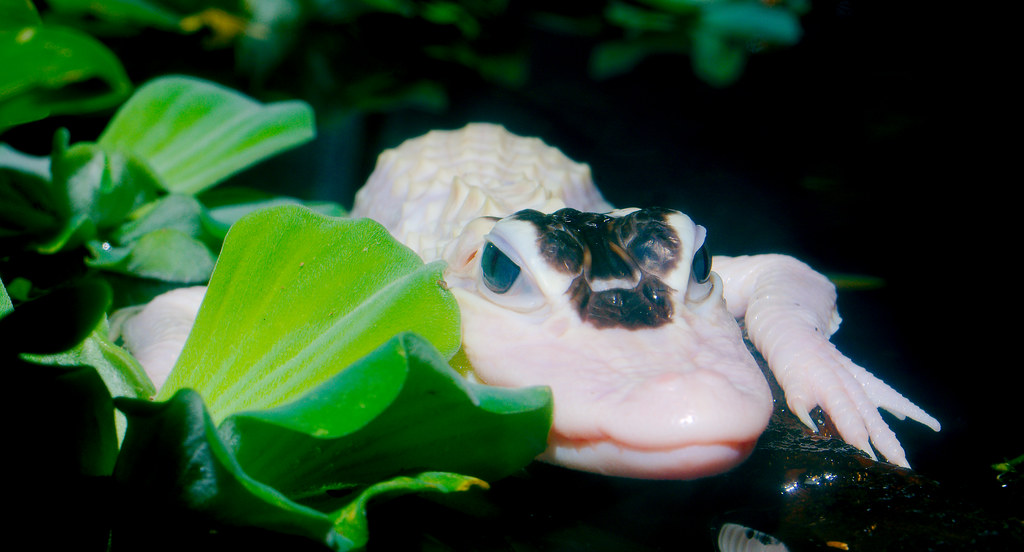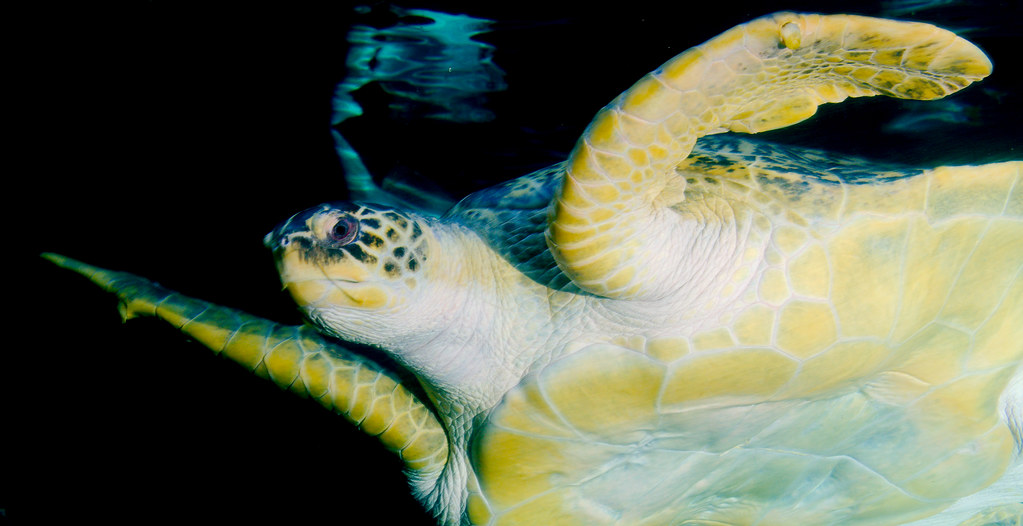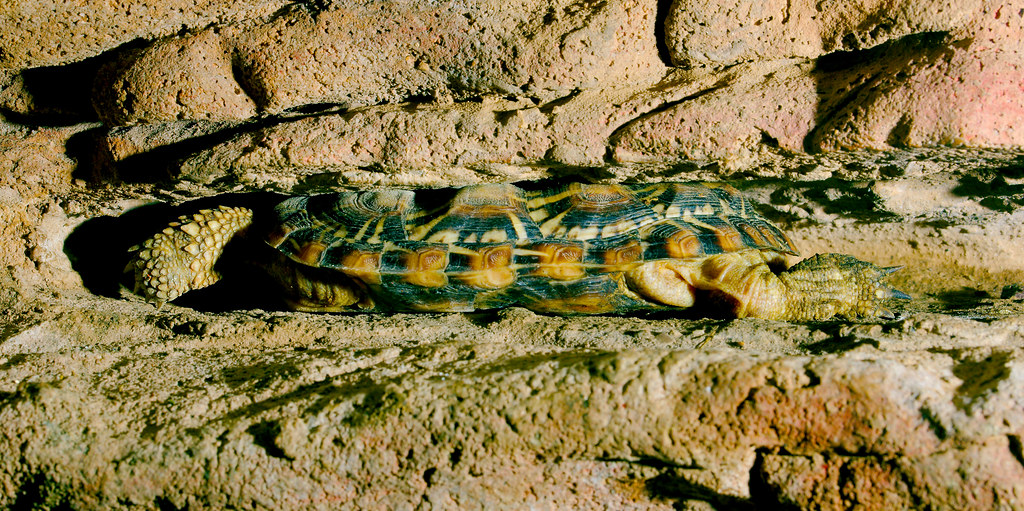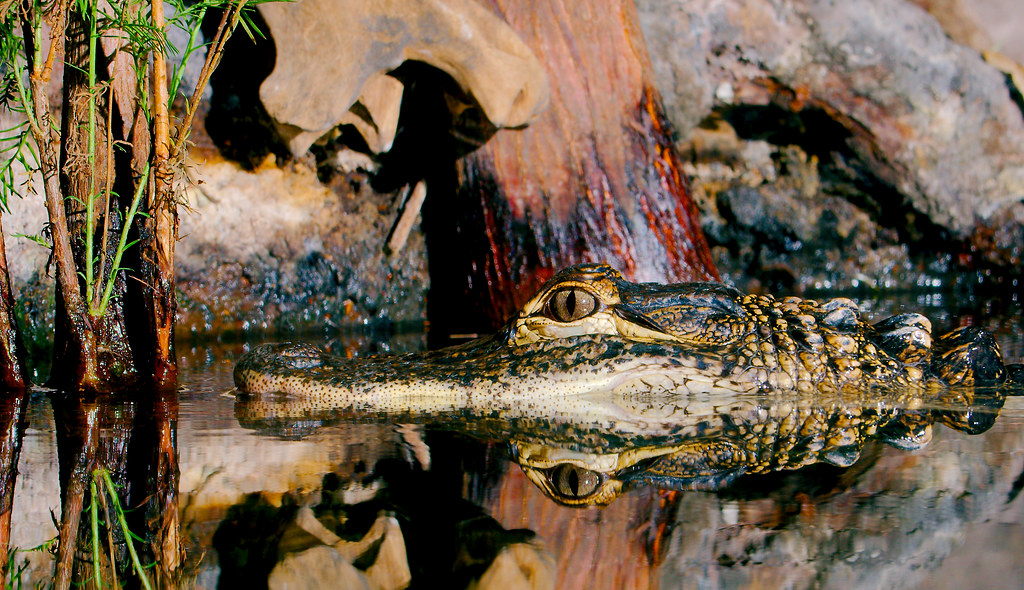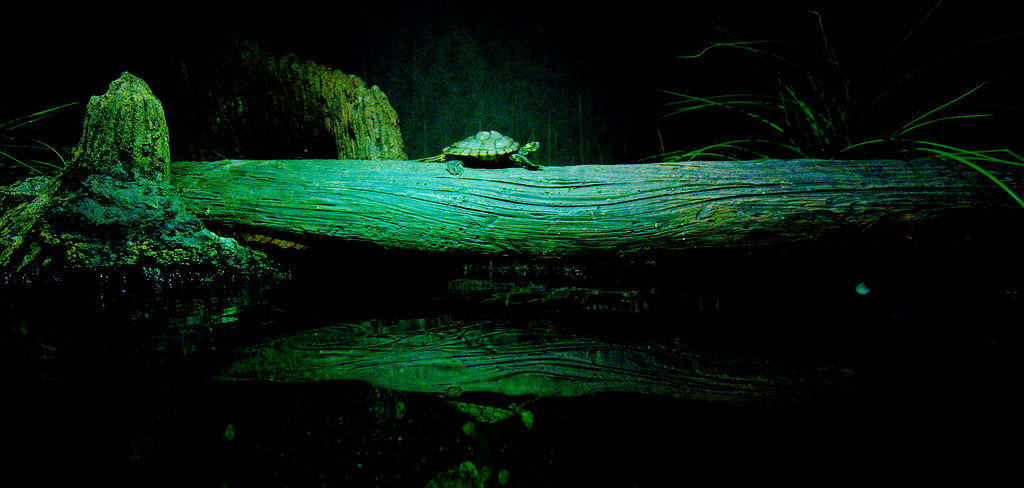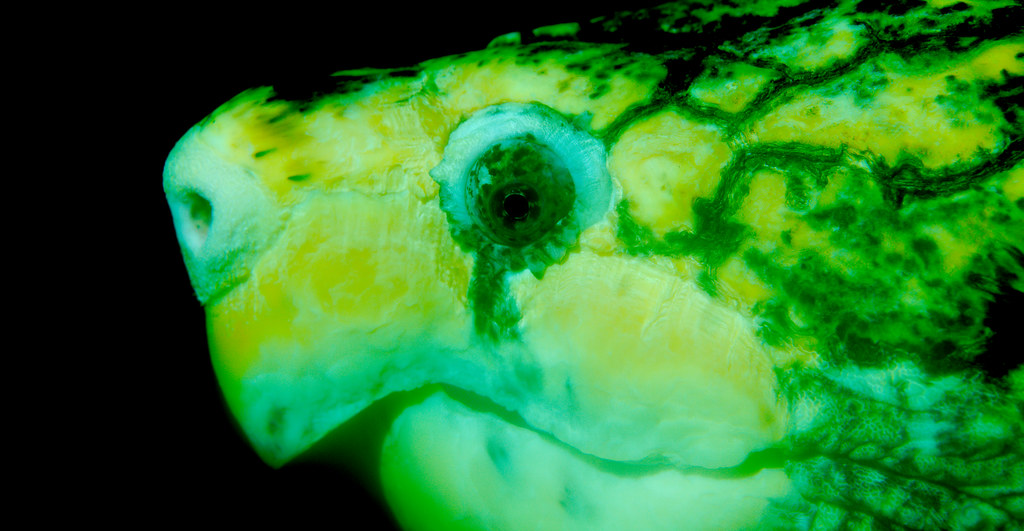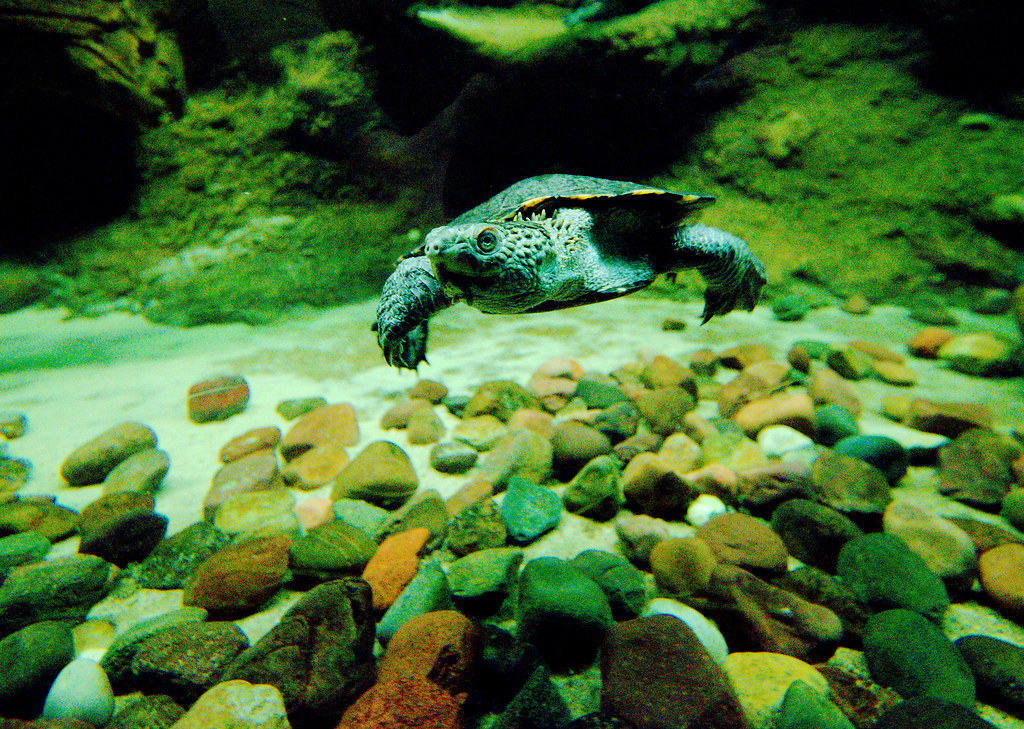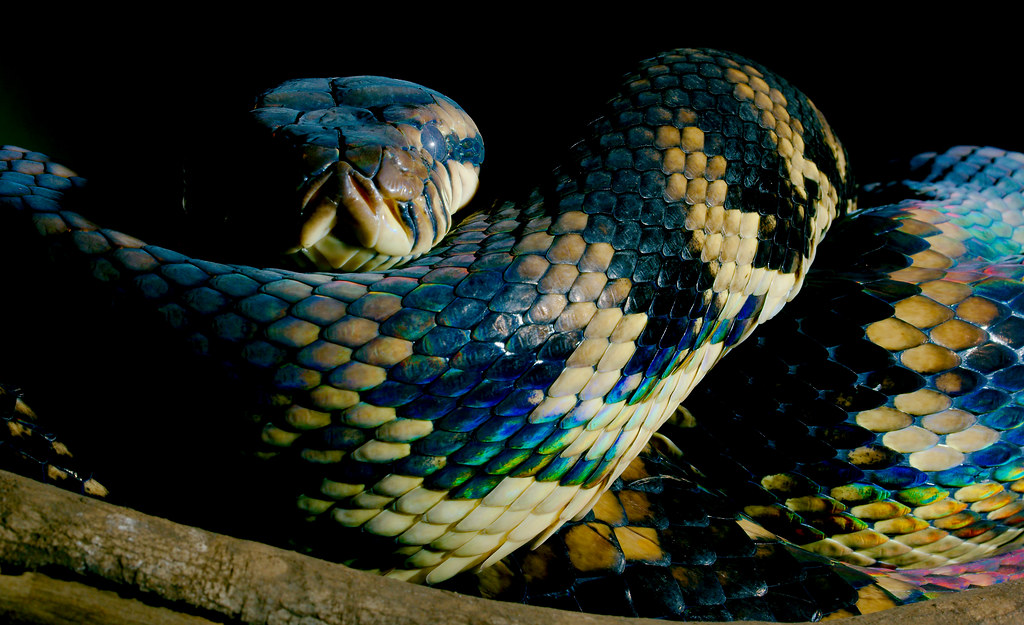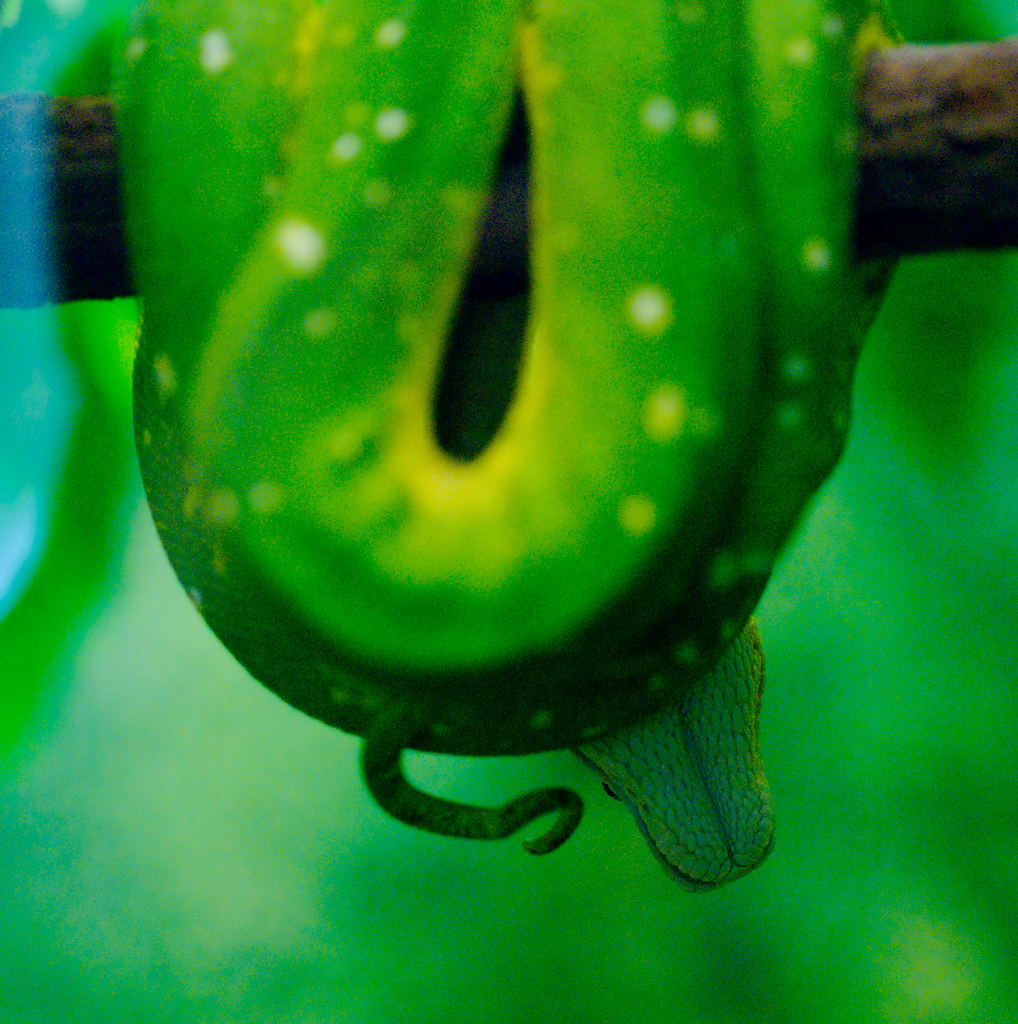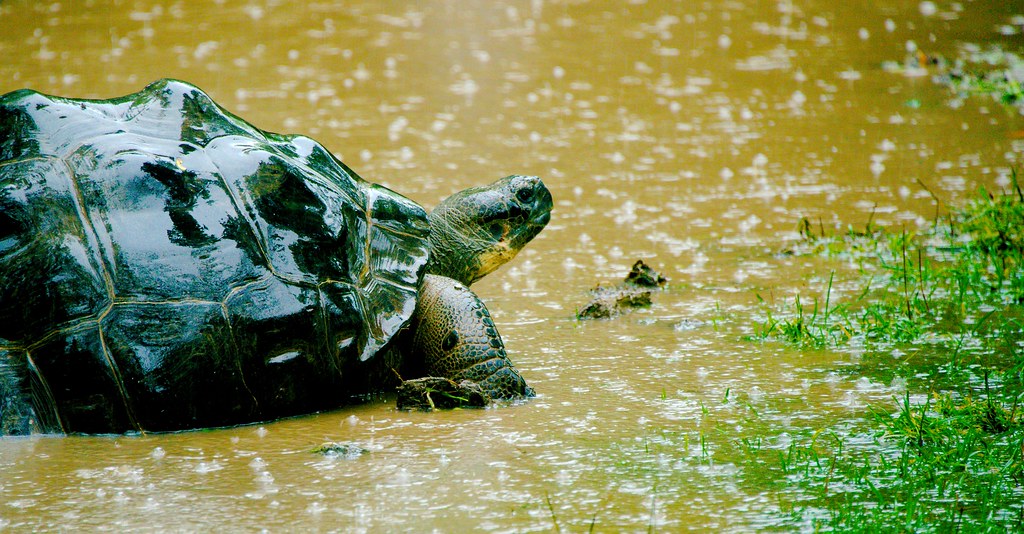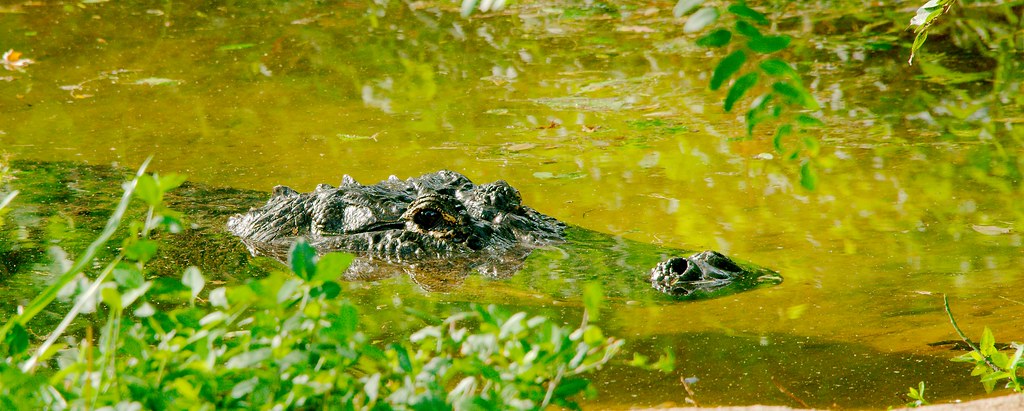Mmmm, flowers.
Category Archives: Reptile
Speckled Rattlesnake
Western Banded Gecko
Box Turtle
Desert Iguana (Dipsosaurus dorsalis)
Turtle
Emerald Tree Boa (Corallus caninus)
Turtle Tracts Tuesday – Sleep
This week for TTT, I want to think about sleep.
Recent studies exploring sleep have been interesting to pursue. Back when I was first learning about science, I was told that fish didn’t sleep, that birds didn’t sleep when migrating over the ocean, and that trees didn’t sleep. As it turns out, all of these are false. Fish sink and rest on the bottom to recover their energy (sometimes digging into sand, sometimes cocooning themselves in mucus. Birds can sleep in the air, sometimes not landing for hundreds of days. And, most recently, we learned that trees droop into a form of “sleep” at night. That’s scientific discovery for you.
A decade ago, perhaps, you lived in a world where you planted a tree in the backyard to shade the house. Now, you live in a world where a sleeping giant towers over your bedroom, providing homes to different dreamers … snoozing squirrels in the branches, dormant deer around the trunk and, in their roots, torpid tortoises.
Terrapins, turtles, and tortoises (don’t bother looking up the difference, it’s a maze of twisty little passages, all alike) all sleep normally, but also have a form of long-term sleep. Sometimes it’s called hibernation, sometimes æstivation and they do it to avoid environmental extremes. When it’s too hot or too cold, they suspend their metabolism and find a safe place to wait it out. It’s a finely tuned process that has worked well for millennia … when things go as planned.
As scientists have learned with both frogs and turtles, if their natural cycles are interrupted, things can go badly wrong. The mountain yellow-legged frog hibernates each winter and, if they don’t get their 40,000 winks, they don’t breed in the spring. As this is an endangered species, it was rather important for people to figure out why the breeding program wasn’t working well before their rescue population of frogs aged out. A similar issue happened with the western swamp turtle, where weekly health checks woke the turtles from their summer æstivation, preventing them from being healthy enough to reproduce.
There’s a lot of weirdness in nature. For turtles in particular:
- A turtle’s shell is a modified spine and rib combination. Neil Shubin’s work on embryonic development, excellently written up in Your Inner Fish, recently shed some light on how this happens, with specific genes triggering the development of specific aspects of the skeletal structure, the same code being used throughout all animals.
- Like the rest of us, turtles need oxygen to survive. They all breathe air through their mouth, but some of them can engage in cloacal or buccopharyngeal breathing, where they bring in water or air through their mouthes or cloaca (the so-called “bum breathing”). This allows them to survive in oxygenated water when they cannot safely surface.
- Male and female turtles often look very similar to one another, even having similar genitalia. They identify their respective sexes through pheromones, a type of hormone that has been around for billions of years but that humanity discovered less than a century ago. It wasn’t until 1992 that we even gained the ability to measure pheromones outside of a lab.
- Speaking of sex, the sex of the turtle that hatches is dependent on the temperature of the egg in the nest. If it’s too cold, they all hatch as males. If it’s too warm, as females. To get a stable population, the eggs need to be around 50/50.
But what does this all mean in a warming world? Is it possible that higher temperatures will shift the sex ratios of the eggs, resulting in an imbalance? With an ocean of rising acidity and more calcium bonded to carbon, will their have difficulty forming shells from their ribs and spines, leaving them less well protected against predators? In a world where oceans and lakes can store less oxygen, will turtles’ breathing methods fail them, requiring them to spend more time surfacing and less time eating or evading predators? Will a warmer climate cause their pheromones to break down quicker, making it harder to find mates? Is it possible that warmer temperatures will reduce hibernation time and increase æstivation time, so turtles spend too much or too little of their time asleep and their pheromone release is hampered, so they don’t mate?
The answer to all of these is “maybe”.
The fact is that there’s a lot we don’t know and it’s a race to find out before a species is gone. It’s never as simple as “Save the Turtles”. Ecology is a big tangled mess (even worse than the tangled terrapin/turtle/tortoise taxonomy tumult), and isolating the important bits from complex ecologies is hard work. It was hard work to identify how skeletons form. It was hard work to figure out how to track invisible, scentless pheremones. It was surprisingly easy to figure out how turtles were breathing (they just dropped food colouring in the water) … but most of it requires someone with an idea and a bit of funding.
CuraEarth has the idea: untangle the ecology living on and inside of turtles to track how they’re doing and learn other interesting things along the way. They just need the funding: https://www.indiegogo.com/projects/turtletracts-studying-microbiomes-for-sea-turtles/#/
If you could spare even $5, it would help a lot to raise the profile of the project.
Turtle Testing
Last night, I went to Wood Lake to test out my new infrared camera. This video is not from that camera.
One thing I’ve noticed about doing testing is that whichever camera test I take with me is not the right one for whatever happens. If I take my macro lens, it’s heron day. If I take my wide angle, it’s frog day. If I take my long lens, it’s beautiful light day.
So this time, I took my new infrared system (the reason why is in the video) and my new “backup” system that also has video capabilities. x
It turned out to be “turtle laying eggs” day. Of course, I did not bring my tripod. *sigh* (Still think it turned out OK.)
Leucistic Alligator
Turtle Tract Tuesday
For the next two months, I will be running Turtle Tract Tuesdays (TTT), a name that will make sense shortly. This TTT is focused on the concept of hunger.
In 1966, the world population was 3.4 billion people. In 2016, it is now 7.4 billion. That is a very significant change. When you more than double the number of people on the planet in a mere 50 years, things start to break. The systems that can feed 3.4 billion people can not feed 7.4 billion. And while we have adapted, we as a people are still ravenously hungry.
Our physical hunger has begun to empty the oceans as marine fish capture has risen over 400% in the last fifty years, rendering some species extinct and many endangered.
Our hunger for wealth has massively expanded the real GDP, but with it our hunger for energy grew. That caused an increase in the pollution that satisfying that hunger brings (oil spills, carbon dioxide, methane, nitrogen, and nitrous oxide). As a result, one of the big changes is in the temperature of our planet and the increasing acidification of our oceans.
Hunger is an interesting feeling. There are many feelings in human experience that, once satisfied, leave a significantly lessened memory. The pain you feel in the moment is always stronger than the pain you remember. The desire you have for a thing or a person is never as strong in retrospect. And hunger … hunger is one of the worst.
When you are hungry … truly hungry … little else matters in your world. You can’t think about the work you have to do. You can’t plan ahead. You must satisfy that hunger as soon as possible, even if it means thinking in the short term and winding up in a worse situation just to satisfy your hunger … overspending on a meal, eating something that’s bad for you, etc.
However, in someone else, it’s entirely different. They may hold up a sign that reads “hungry”, they may beg you for food. Generally, the response is “Eh, I’ve been hungry before. It’s not so bad.” Even if you habitually empathize with others, even if you’ve experienced that level of hunger yourself, you only experience that hunger now in retrospect. So of those 7.4 billion people, a large number of them are experiencing a level of hunger … be it for food or money … that those of us who are not hungry can simply not imagine without conscious effort.
Many of us have had hard times in our past, but to differing degree, so I would like you to take a moment and think about what it is like to be truly hungry.
- What if you skipped breakfast and lunch and are sitting down to dinner, and just as you reach out, someone runs by and takes your dinner for themselves?
- What if haven’t eaten in three days because, while you’ve tried, there haven’t been any fish to catch?
- What if it’s not just you, and your children are starving? What would you do to get them a meal?
For many, this is real life. The vast global income inequality has resulted in rich companies in rich nations taking the food out of the mouths of the poor as large fishing companies deplete traditional fisheries. Adding insult to industry, they do so by polluting the oceans, destroying the ability of these fisheries to recover. Increased acid levels and ocean temperatures kill the coral reefs that shelter the young fish that grow into the bigger fish on which people in Central America survive. Without those fish, they must sell other things to the rich to get money to buy food … from the rich. So, being hungry, they barter the future for the present and sell what few resources they have or eat things that are bad for them … like sea turtles.
Sea turtles must lay their eggs on land and when they do so they are extremely vulnerable. Even though they are protected, a hungry person isn’t going to prioritize the well-being of a species over that of their own children. So eggs are stolen, turtles are killed, and their shells are sold to the rich. As time goes by, there are fewer turtles, which means not as many sponges are eaten. Since sponges compete with coral, the reefs get weaker, which means fewer fish … so people kill more turtles.
—
There is, however, an upside to hunger. Our hunger for new experiences has resulted in unprecedented global travel and telecommunications, so we can share our experiences with others. This is how we know about the people in Central America, and about the turtles. It is also how we know about the habits of rich companies and rich nations and how their pursuit of increased wealth starves the rest of the world.
One response we, as a people, have invented is that of crowd funding. In a well-balanced world, where no one is hungry, we would not need to raise money from our friends. However, on a planet of 7.4 billion people and only 74 million rich ones, we must make do with what we have.
As such, I would like to point you to Cūra Earth’s fundraiser. Yes, in a world full of the hungry, asking you to help to fund sea turtle experiments may seem like a non sequitur, but the sciences are starving too.
By finding ways to measure sea turtle health and using them to measure the health of the oceans, we can improve the health of our fisheries. More fish means fewer turtles get eaten, which means more turtles, which means healthier reefs, which means more fish for everyone.
It doesn’t cost much to fund a research project and, since the rich companies aren’t doing it, it falls to us.
Please, if you can, spread the word and toss what you can, $5, $20, etc. into the research fund.
Thank you.
Pancake Tortoise (Malacochersus tornieri)
The Alligator and the Beaver
Once upon a time, there was an alligator. This alligator was the king of the swamp, and all of the other animals feared him. He may not have been the fastest swimmer in the swamp, nor the smartest creature, but he was old, he was big, and he was strong.
One day, when climbing onto a log, he heard a “SNAP” and glanced down to see two pieces of metal clamped around his leg. He tried to bite it, but alligators are not very flexible. He tried to pull away from it, but there was a chain, and it held tight. So, he did what he always did when confronted with a problem. He moved to a nearby patch of sun and slowly thought.
As he was thinking, a beaver carefully approached him, taking care to stay clear of the sharp jaws. The beaver had heard the snap and knew what it meant. He approached the alligator and said: “Sire. I heard the snap of death and came to investigate, fearing I would find my wife or children, as I had found both my mother and father. I now see you clearly alive and I must ask how you managed to survive the metal death the sits and waits for my kind.”
The alligator just stared at the beaver through his reptilian eyes. The king was known for his strength, not his words.
The beaver then said “It must be because you are so strong, that you can survive. But I must ask, out of concern, if you are hurt.”
The alligator stared at the beaver for many heartbeats and then slowly lifted his leg to show where the metal teeth had pierced the skin, blood oozing out around arc.
The beaver tentatively drew nearer, looked at the trap and said “I may not be as old as you or as strong as you, but my people are fine engineers. Would you permit me, in the name of friendship, to attempt to free you? I mean, I’m sure you’d free yourself in time, but it must might be faster if I helped.”
The alligator closed his eyes once, then re-opened them, indicating that the plan was acceptable.
And so the beaver swam off to find a tree of the right size. Once felled, he stripped some branches and created a lever arm with stops, so the trap could slowly be wedged open. He swam back, and warning the alligator that it might hurt as he opened the trap, began to apply pressure. It took many long minutes, but eventually the trap opened just far enough for the alligator to extract his leg. He quickly slipped into the water to ease the pain as the beaver used his other stick to re-trip the trap, so it would not hurt anyone else.
The was a second “SNAP” as the trap closed … and then a third.
For, while friendship is a wonderful thing, in the swamp, meat is meat.
Barbour’s Map Turtle (Graptemys barbouri)
Bornean River Turtle (Orlitia borneensis)
This turtle just thought of the concept of a “Progressive Funeral”, in which each mourner opens their home for a few hours and, over the course of several days, everyone moves from house to house, eating, drinking, playing music, and sharing memories of the deceased … and wherever the ashes get forgotten is where they have to be scattered.
This turtle isn’t sure if the idea is brilliant or horrifying.
